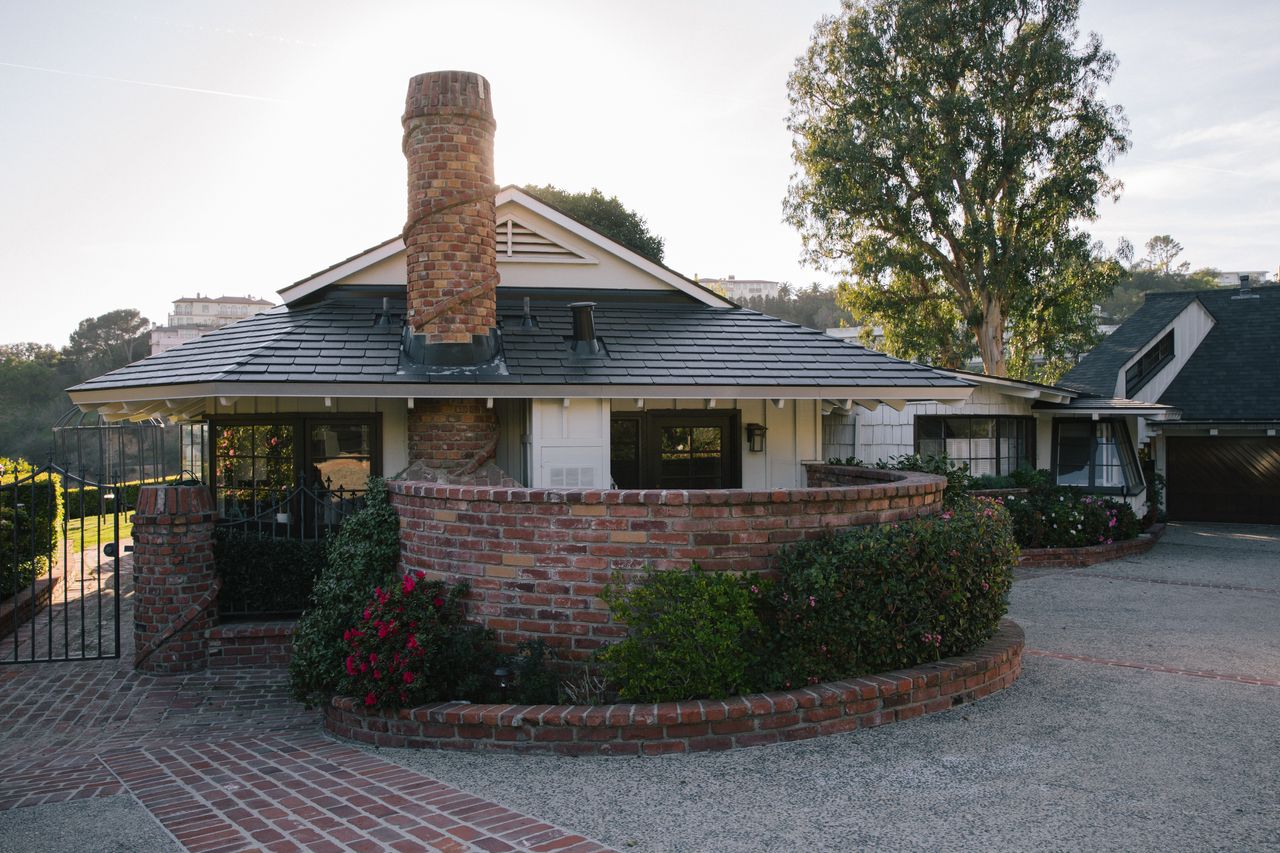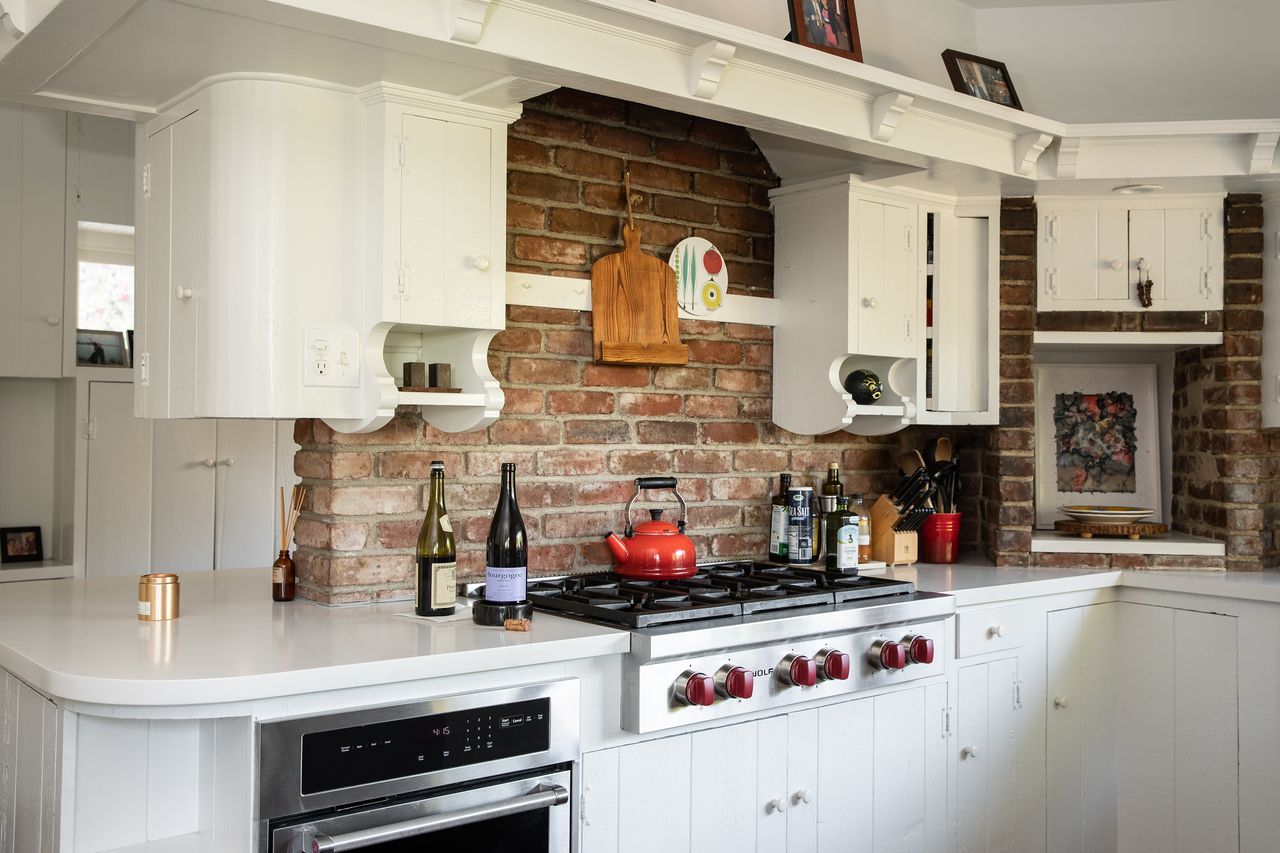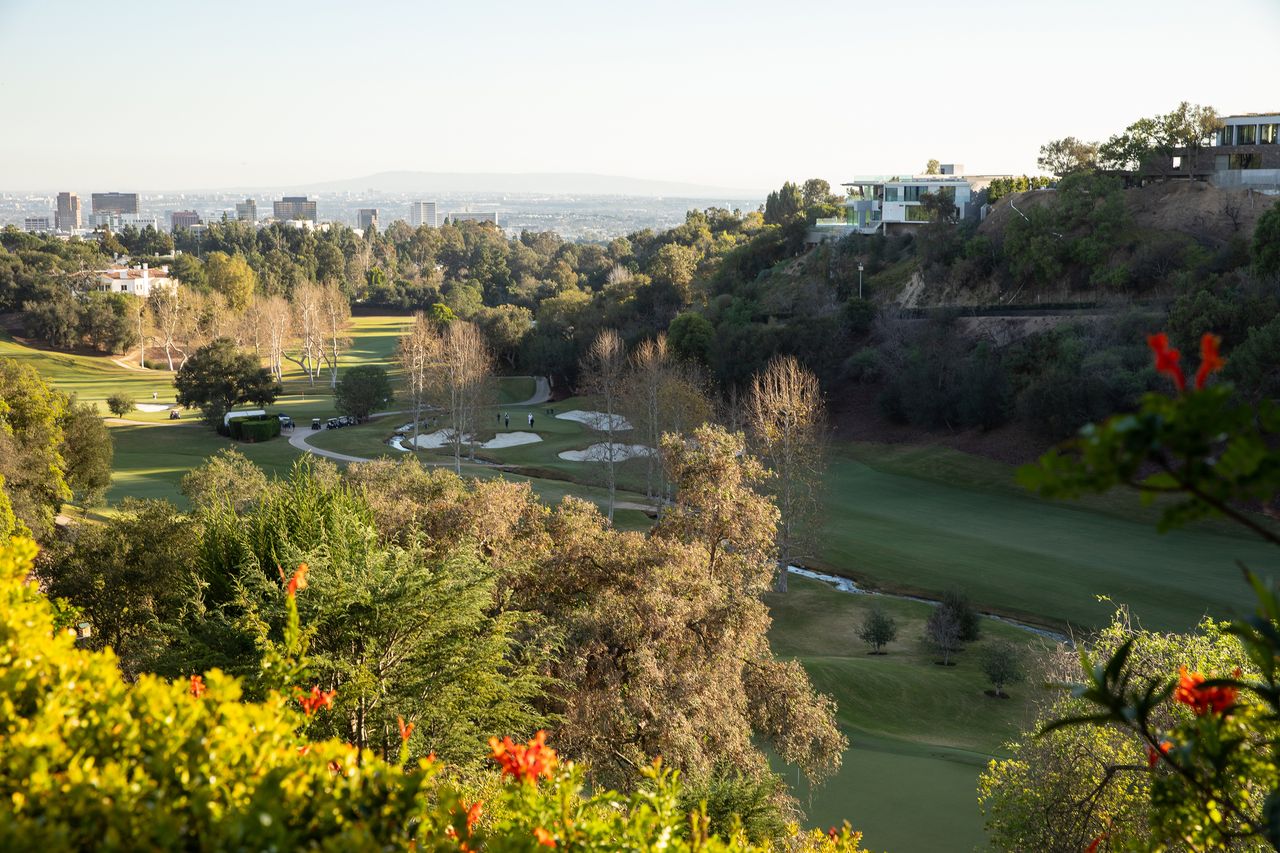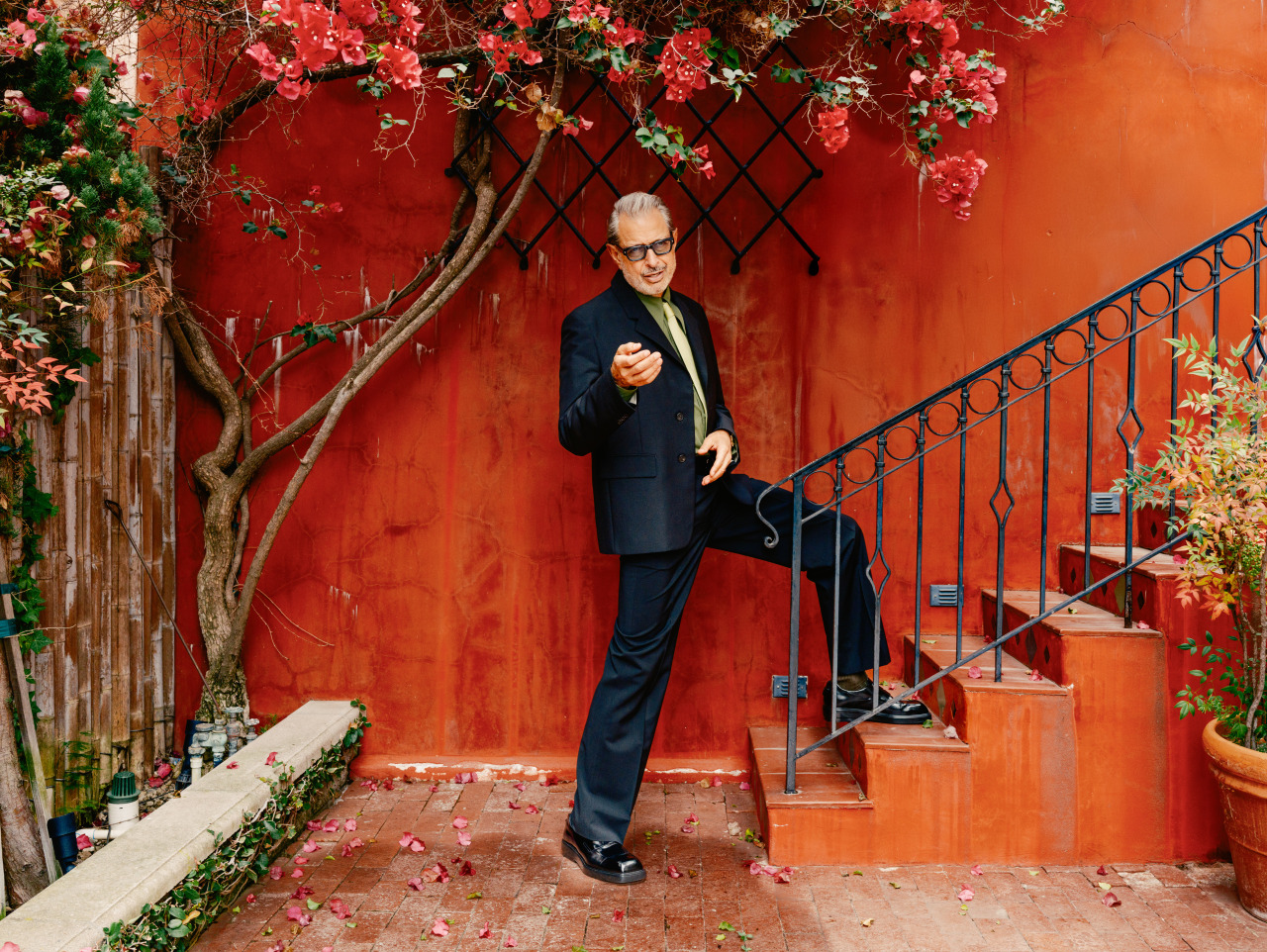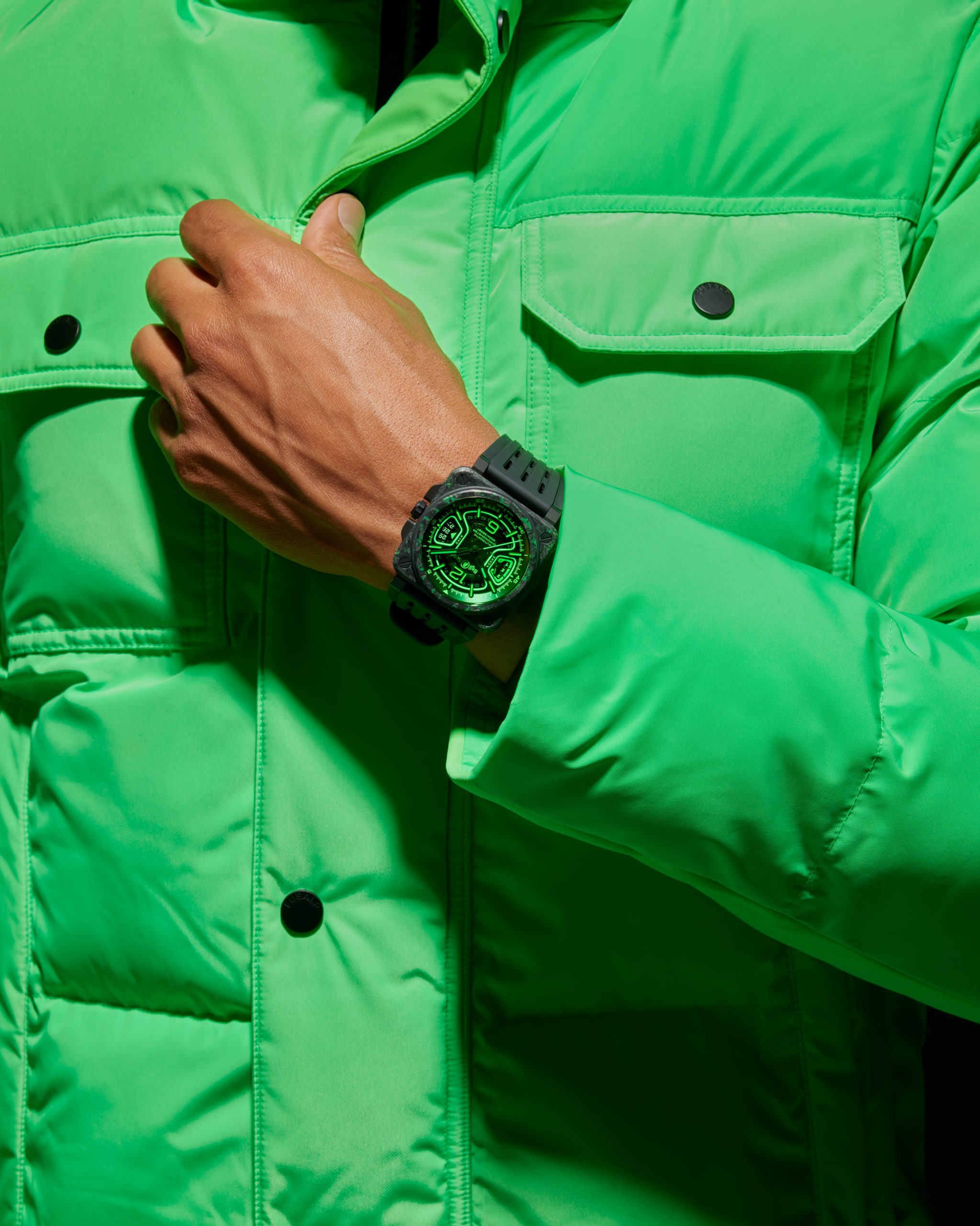Elon Musk Sells Gene Wilder’s Former Home Back To The Late Actor’s Family
Mr. Musk sold it to the new owner, the famed actor’s nephew, with the stipulation that the property be preserved.
Jordan Walker-Pearlman was heartbroken when he was told, erroneously, that the house where he grew up with his uncle, the late actor Gene Wilder, had been demolished.
He still had vivid memories—sometimes even dreams—of Mr. Wilder’s morning swims in the kidney-shaped pool, the Sunday after-tennis hangouts with the likes of Mel Brooks and Sidney Poitier, raucous dinner parties, and listening to Mr. Wilder read scripts and play piano while he nursed a Lillet cassis cocktail.
The low-slung, white-shingled house, in the Bel-Air neighbourhood of Los Angeles, was also where actress, comedian and “Saturday Night Live” cast member Gilda Radner died from ovarian cancer in 1989. Mr. Walker-Pearlman considered her a second mother after she married Mr. Wilder in 1984.
“I mourned the house,” says Mr. Walker-Pearlman, a 53-year-old film director and writer, who directed the 2000 film “The Visit” and whose wild hair and prominent, expressive eyes are similar to those of his late uncle, known for his work in “Willy Wonka & the Chocolate Factory” and “Blazing Saddles.” From an early age, Mr. Walker-Pearlman split his time between living with Mr. Wilder, and living with his grandmother in Harlem. His biological parents, he says, were “a little crazy and not enthusiastic about the responsibilities of child rearing.”
Then one day, when he was in the neighbourhood, Mr. Walker-Pearlman drove by to show his wife, screenwriter Elizabeth Hunter, where the house had been. He was shocked to find it still standing. Owned by tech billionaire Elon Musk, there was a large party under way, but the security guard opened the gate so they could peek in.
About a year later, a friend sent him a screenshot of Mr. Musk’s now-famous May 1, 2020, texts:
“I am selling almost all physical possessions. Will own no house” and “Just one stipulation on sale: I own Gene Wilder’s old house: It cannot be torn down or lose any of its soul.”
A US$9.5 million listing appeared on forsalebyowner.com, advertised as the “former home of Gene Wilder/Willy Wonka,” “upgraded with modern amenities, but preserved original charming and quirky vibe.” The listing stipulated that the home was being sold with the condition that it must be preserved.
Mr. Walker-Pearlman said he reached out to Mr. Musk’s team immediately. He knew he couldn’t afford that price, but the tweet gave him optimism they might reach a deal. “The only person who could possibly want it not to be torn down as much as him was me,” he says. Mr. Musk didn’t respond to a request for comment.
After four months of negotiations, Mr. Walker-Pearlman says Mr. Musk agreed to sell the house to him and Ms. Hunter for US$7 million along with what’s called a “long form deed of trust and assignment of rents,” in which Mr. Musk agreed to lend the couple $6.7 million, according to public documents.
“He could have sold it for so much more,” says Mr. Walker-Pearlman. “His sensitivity to me can’t be overstated.”
The sale closed in October 2020. The timing for Mr. Walker-Pearlman was exquisite, because it allowed him to use the house as the set for his upcoming film “The Requiem Boogie,” produced by his production company, Harlem, Hollywood. The somewhat autobiographical plot follows a middle-aged former child actor, played by Mr. Walker-Pearlman, who is mourning the loss of his movie-star father. It is a spiritual, quasi-comedy about dealing with Mr. Wilder’s death and the nature of show business, says Mr. Walker-Pearlman.
Living in the house again has been both wonderful and spooky, says Mr. Walker-Pearlman. He feels the ghosts of the people who made it come alive. When he walks into a certain room, a memory will pop up and he will get teleported back, he says. At times he even feels like messages from beyond are being sent, such as when the crew was filming in what was Ms. Radner’s dressing room and suddenly the water in the shower and sink came on.
When he and Ms. Hunter were signing the papers for the loan from Mr. Musk, a buck they had never seen before appeared from the hedges and stood in the window, staring at them, hanging around for nine hours that day; they haven’t seen it since. The couple’s 3-year-old nephew, Hunter, has told him there are ghosts in the house, he says.
The house came with many of Mr. Musk’s furnishings, including a purple sofa, a drawing of a clown, a large chess set and a swing encased in a giant metal birdcage in the backyard, which Mr. Walker-Pearlman says was a party gift to Mr. Musk.
Mr. Walker-Pearlman says he believes Mr. Musk originally bought the property to protect the distant views of Los Angeles and the Pacific Ocean from his primary house across the street, which Mr. Musk sold for $29.72 million to Chinese billionaire William Ding in June 2020, according to public records. He says he believes Mr. Musk used the garage as a school for his children at one point and the main house to hold parties. Mr. Musk didn’t respond to a request for comment.
Some things have changed since Mr. Wilder owned it: There used to be white shag carpet in the living room (a recommendation to his uncle from the late actor Burt Reynolds, says Mr. Walker-Pearlman); the main bathroom had a bath. Mr. Wilder’s much-used piano and a dart board are gone. The ceiling is now painted with black and white stripes and trees no longer block the view of the Bel-Air Country Club’s golf course below.
But much is the same. Mr. Walker-Pearlman still uses the indoor grill in the dining room where he says Mr. Wilder loved to cook chicken three times a week. He sits at the small kitchen desk, where he says Mr. Wilder would eat his morning bran muffins and drink Earl Grey tea. And he swims in the same pool where Mr. Wilder would do morning laps and where he taught Mr. Walker-Pearlman how to swim. Almost every wall and shelf contains memorabilia, including photographs of Mr. Wilder playing tennis, dressed as Willy Wonka.
Mr. Wilder, who was born Jerome Silberman, bought the 2,800-square-foot, five-bedroom, five-bathroom house in Bel-Air for around $300,000 in 1976, buoyed by the success of the 1974 film “Young Frankenstein,” in which he starred.
Mr. Walker-Pearlman had been living part time in Harlem with his grandmother, and part time with Mr. Wilder, who was his mother’s brother. He soon started spending all summer and time during a few other months in Los Angeles.
In L.A., Mr. Wilder gave him an education rich in the history of film, moviemaking and acting. He says he learned to process the world in terms of film, being hyper-aware of lighting and constantly wanting to change people’s dialogue. He started acting as a child and made and starred in his own film for Nickelodeon as a teenager. He also learned a lot about French red wines and the importance of romance, he says. “I didn’t leave his side.”
Ms. Radner urged Mr. Walker-Pearlman to try college, so he attended George Washington University and Howard University for stints. But she was also upset when he said he didn’t want to pursue an acting career. He says she told him “this house is for crazy people. You have to become one of us.”
The result was a mixed relationship with film. He says he learned to hate what he sees as the commodification and narcissism of the film industry, but he loved being in the editing suites and on set, especially during the filming of “Hanky Panky” in 1981, directed by Mr. Poitier, when Mr. Wilder and Ms. Radner met as co-stars.
In 1991, two years after Ms. Radner died, Mr. Wilder married his fourth wife, the former Karen Boyer. They eventually moved permanently to Ms. Radner’s former farmhouse in Stamford, Conn., where Mr. Wilder had been living much of the time after Ms. Radner’s death. He sold the Bel-Air house in 2007 for $2.7 million to Bristol Capital LLC. Mr. Musk bought it in 2013 for $6.75 million, according to PropertyShark.
Mr. Walker-Pearlman says he’s still mourning his uncle, who died in 2016 at age 83, and Ms. Radner. Living and filming in the house has triggered a range of emotions. “It’s the closest you can get to going back to the past,” he says. He worries that his wife pays a toll for that.
But Ms. Hunter says she’s thrilled to get the chance to live in such a beautiful house in a neighbourhood she never thought she would be able to afford. “It’s magic,” she says.
Pure Amazon has begun journeys deep into Peru’s Pacaya-Samiria National Reserve, combining contemporary design, Indigenous craftsmanship and intimate wildlife encounters in one of the richest ecosystems on Earth.
Australia’s housing market defies forecasts as prices surge past pandemic-era benchmarks.
The 73-year-old star of ‘Wicked: For Good’ gets cameras flashing with his kooky off-screen style. Here, he discusses his morning stretch routine, a work-in-progress sock drawer and his antagonism toward fitness rings.
From a young age, Jeff Goldblum had an eye for clothes. Growing up in Pittsburgh, he wanted glasses like John Lennon’s and turtlenecks like the Rat Pack’s.
As a member of New York’s Neighborhood Playhouse studying under the legendary Sanford Meisner, he scoured vintage shops for Russian-style overcoats and aviator hats.
After his success in blockbusters like “Jurassic Park” and “Independence Day,” he went through a Japanese-denim phase and loved what he calls “I’ve-been-working-on-the-railroad-type vests.”
“I’ve swung wildly, and I’ve had a lot of bad ideas,” Goldblum said of his style on a recent Zoom.
The 73-year-old wore a bespoke green shirt from Anto, a shirtmaker based near his Los Angeles home.
On his feet were light-green socks, and handmade shoes from Florence, where he lives part-time with his wife, Emilie Livingston, and their two sons.
This month, he reprises his role as the Wizard of Oz in “Wicked: For Good,” the second installment of the film adaptation of the musical juggernaut. He insisted he’s not contracted by Universal Studios to only wear green on the press tour.
In the last decade the world has paid more attention to the actor’s off-screen style, which has evolved since he began working with stylist Andrew Vottero around 2014.
A silver-haired fixture on best-dressed lists, Goldblum often finishes his zany outfits with chunky black specs. He has collaborated with glasses label Jacques Marie Mage and formed a close relationship with Prada , walking its runway and appearing in a 2022 brand campaign.
Here, Goldblum, who regularly performs with his jazz band the Mildred Snitzer Orchestra, talks cashmere, vegan Bolognese and handshakes.
Studying with Sandy Meisner was: a portal into my more-intense interest in clothing. Everything could be a key to finding a character, behavior and discovering who you are in the story – (for example) how the shoe felt and how it made you walk.
You don’t really see: a 1970s-style long shirt collar in stores. I had this green shirt I’m wearing made at Anto in Los Angeles. I have them in a bunch of flavors, including some with Western buttons. I’m thinking about getting one in orange.
I just read: James Kaplan’s two-part biography of Frank Sinatra, whose favorite colour was orange. I’ve always liked orange.
I like: that Marie Kondo book “Tidying Up.” In my youth, my family left me alone one day in the garage. It seemed messy to me. I started to throw everything away. I was sweating under my arms with excitement. I got a big kick out of it.
My kids: like to wear my band merchandise. They sometimes help me dress. I say, “Hey, pick out what I’m going to wear.”
I’ve had to get cozy with one or two: leather jackets for parts like Ian Malcolm in “Jurassic Park.” I have a Saint Laurent motorcycle jacket that I wore the other day that’s kind of tight. I like it a lot.
I probably wouldn’t want to wear: real fur. I’ve stopped eating animals except fish. It’s part health-wise from my nutritionist and part my own feeling about it.
My favourite meal is at: Craig’s in West Hollywood. My wife and I share a chopped salad, minus the cheese, to start. They have a spaghetti squash primavera with broccoli and a spicy tomato sauce. I get it with shrimp or vegan Bolognese.
I’ve always been hypersensitive to: certain fabrics, such as wool. I’ve recently accepted—what’s that wool called?—cashmere. I don’t like things that itch. And I don’t like tags in the back of my shirt. I use a professional seam ripper to cut out tags.
What drives me crazy are: printing machines and my phone, especially how it breaks down so often. I had to deal with that this morning.
My feet must be: comfy cozy. My wife, a ballet dancer, says we’re not really working unless our feet are bleeding. I can’t accept that. I really like these handmade shoes I had made in Florence. They’re the most comfortable ever.
Florence is: a jewel box of a city. I’ve found the people delightful and the quality of life great. There are so many artisans. My favourite hat is one I purchased at the Borsalino store. I don’t know any Italian. Just a word here or there.
I don’t want to get sick so I prefer: fist bumping to a handshake. My knuckles have hurt from a too-hard fist bump. So let’s fist bump gently. Let’s just fist touch.
I have to organise my: sock drawer. It’s in the research and development stage. I’m very into socks of one kind or another. I like to experiment with a colour, which is why I have a light green pair on now. For tight shoes, I like (thin) Pantherella socks . I like a shorter sock, too. Sometimes I make it look like it’s falling down.
For a while I had an aesthetic allergy to: cobalt blue. You’d see it on a lady’s blouse sometimes, and I would go, “That hurts! It’s too bright.” But yesterday, after going to the Dodgers game with my kids, I put on a Dodgers blue cobalt sock, and I was very happy. So I’m nothing if not changeable.
I love: pockets. I recently got a minty green chore coat by the Row that I really like. Its flap pockets are deep enough that things aren’t going to fall out. I’d never even heard the term “chore coat.” It carries my wallet, keys, maybe a Kleenex, a lozenge, a little pillbox with an aspirin and some hand sanitizer.
I never used: sunscreen. But my wife has got me using Sarah Chapman sunscreen , sometimes even tinted. I’ll use a Joanna Vargas serum of some kind. I’m not sure what it’s doing, but I put it on at night. I imitate Boris Karloff (in the “Frankenstein” films) and I make a joke with Emilie that I’m going to my laboratory to work on my new longevity theorem.
My acid-reflux man said: “Take care of your vocal cords.” So I’m off caffeine. I’ll have a Ryze mushroom coffee in the morning—a scoop with hot water and oat milk. Sometimes the kids will make me a decaf cappuccino with oat milk and a sprinkling of chocolate powder, and that is too delightful.
For many decades: I’ve been totally on the natch. I’ll have a sip of red wine if Emilie says it’s really fantastic, but I don’t want to get loopy.
I get the usual: seven or eight hours of sleep. I stopped wearing my Oura ring. I’d be in bed for 8 hours and it would go, “No, Jeff, let’s call it 5½ hours that you got.” It used to say, “You’re somewhat ready for the day,” and I’d say, “Go to H-E-Double Hockey Sticks.” I threw the darn thing away. I go with how I feel.
When I wake up: I go through the little vestige of transcendental meditation I learned decades ago. I crack my bones and do this stretching routine that ends with my taking a tennis racket and going through the motion of a backhand, forehand and serve. Then I take a Centrum for Men multivitamin, play my piano and work out in our gym.
Early on I was: a lanky guy. Then I started lifting weights. I wanted to steer some of those roles that were a little nerdy—even those scientist parts—in a cooler direction.
Am I: nerdy or cool? Well, these days, according to some circles, the two have overlapped. At this point, who knows?
An opulent Ryde home, packed with cinema, pool, sauna and more, is hitting the auction block with a $1 reserve.
ABC Bullion has launched a pioneering investment product that allows Australians to draw regular cashflow from their precious metal holdings.









